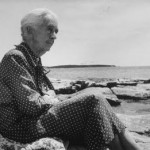Although her claim to being “one of the best known professional newspaper women in Indiana” never convinced editors in New York, Paris, or at any of the national press agencies to put her on staff, Esther Griffin White managed to parlay her unique style into a 50-year career in journalism.
Beyond reporting the news, though, White also figured in it, in an historic capacity. The first woman whose name appeared on an election ballot in Indiana, White later established a precedent as the first woman in Indiana to run for the US House of Representatives.
Although White never attained political office, she made a significant contribution to public life through her activism for women’s suffrage and her role as a cultural impresario.
Born to a Quaker family in Richmond, Indiana in 1869, White attended a few classes at Earlham College before starting to work as a reporter. From columns on society weddings and the annual Chautauqua for the local gazettes, White proceeded to write about cultural topics for such national publications as House Beautiful, American Art News and Woman’s Home Companion. Her flamboyant, highly subjective prose notwithstanding, White was a charter member of the Indiana Women’s Press Club.
In between paid assignments, White published her own rag—The Little Paper—for which she handled every need from photography to circulation. At the same time, White wrote poetry, published one of the first studies of Indiana art, and introduced high culture to Wayne County by booking premier orchestras and theatrical productions in local venues.
White’s journalistic endeavors became increasingly political during the struggle for women’s suffrage culminating in the passage in 1920 of the Nineteenth Amendment. When she ran for delegate to the 1920 Republican State Convention, the first woman whose name appeared on a ballot in Indiana could not yet vote.





















